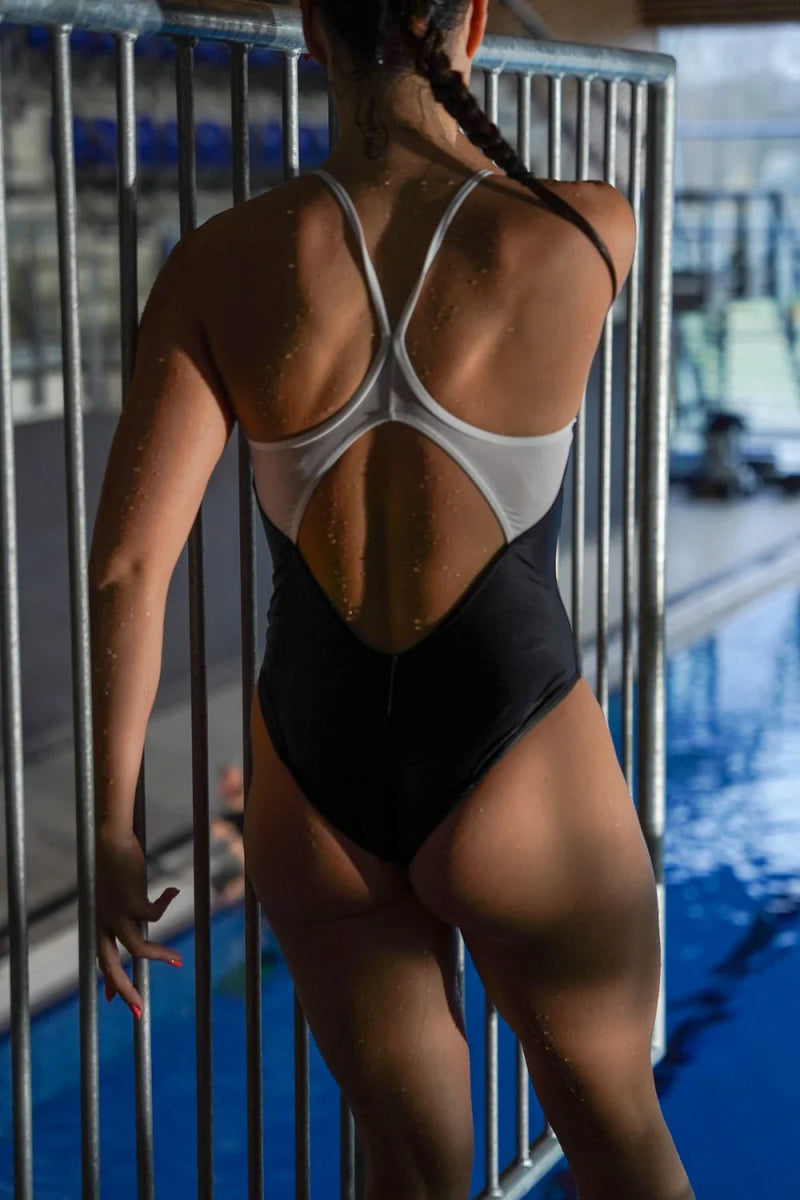
Can Swimming Build Muscle?
|
|
Time to read 4 min
|
|
Time to read 4 min
Swimming is often praised for its cardiovascular benefits, its low-impact nature, and its ability to torch calories. But what about building muscle? If you're wondering, can swimming build muscle? — the answer is yes, but there’s more to the story.
In this article, we’ll dive into how swimming can help with muscle growth, which muscles benefit most, and how you can tailor your swimming workouts for strength and tone.
Table of contents
Swimming is a resistance-based, full-body workout , which already gives it a strong foundation for building muscle. When you swim, your muscles have to work against the resistance of water — which is about 800 times denser than air . This constant resistance recruits and activates multiple muscle groups simultaneously, making it a powerful tool for muscle engagement.
However, swimming isn’t a traditional form of resistance training like weightlifting, where muscle hypertrophy (growth) is typically the primary goal. Instead, swimming builds lean, toned muscle with a strong emphasis on muscular endurance and functional strength.
Pros:
Swimming activates nearly all major muscle groups — from your shoulders and back to your core, glutes, and legs — making it a total-body workout.
Because water supports your body, swimming offers resistance training without the joint stress of weightlifting or high-impact sports — ideal for people with injuries or joint issues.
Swimming conditions your muscles for long-term performance , not just explosive strength — great for athletes, endurance trainers, or active lifestyles.
Movements in water mimic real-life motions, helping to develop balance, coordination, and functional strength that translates outside the gym.
Unlike many forms of strength training, swimming also burns a significant number of calories, helping to shed fat while maintaining lean mass .
You’ll also improve your cardio health , reduce stress, and enjoy the meditative rhythm of water — an added bonus for holistic wellness.
Cons:
Swimming lacks the progressive overload necessary for significant muscle mass gains — it tones and strengthens, but it won’t make you bulky.
Unlike gym workouts that focus on specific muscles (e.g., biceps curls or leg presses), swimming is less effective for isolating and growing a single muscle group.
If you do the same swim routine every time, your progress might plateau. You need to vary strokes, intensity, and add tools to keep challenging your muscles.
To get the most out of swimming, you’ll need access to a pool , swim gear, and sometimes coaching — which can be less accessible or more expensive than basic gym equipment.
Unlike lifting weights (which gives you a muscle "pump"), cold pool water can constrict blood vessels , potentially making muscle activation feel less intense.
Must Have Products
Swimming engages your entire body — but different strokes emphasize different muscle groups:
Muscles worked: Deltoids, latissimus dorsi, triceps, core, glutes
Benefits: Excellent for upper body and core endurance
Muscles worked: Pectorals, biceps, quadriceps, hamstrings, adductors
Benefits: Engages both upper and lower body in powerful, coordinated movements
Muscles worked: Shoulders, lats, glutes, hamstrings
Benefits: Great for posture and spinal alignment
Muscles worked: Chest, shoulders, triceps, abs, hips
Benefits: Builds explosive power and upper body strength
These strokes engage major and stabilizing muscle groups , creating a balanced workout that supports long-term muscle tone and core stability.
If your goal is to get toned, lean, and strong, swimming is fantastic. But for serious muscle hypertrophy — like bulking or bodybuilding — swimming alone might not be enough. Here’s why:
It emphasizes slow-twitch muscle fibers (good for endurance, not max size).
It lacks progressive overload , a key principle in muscle-building that involves gradually increasing the difficulty of your workouts.
To build larger muscle mass, consider supplementing your swim routine with dryland strength training such as bodyweight circuits, resistance bands, or weights.
To build more muscle while swimming, try these strategies:
Add high-intensity sprints to your sets. This stimulates fast-twitch muscle fibers responsible for strength and size.
Alternate your swim strokes to engage different muscle groups and avoid overuse injuries.
Incorporate tools like paddles, fins, drag suits, and resistance bands to increase intensity and challenge specific muscles.
A hybrid approach — swimming plus bodyweight or resistance training — can accelerate results.
Muscle building happens outside the pool. Get adequate protein, hydration, sleep , and recovery between sessions.
and recovery between sessions.
Yes, swimming can build muscle — particularly lean, defined, and functional muscle. It’s a fantastic tool for developing strength, endurance, and overall athleticism. While it might not deliver the mass-building results of weightlifting, it's perfect for those seeking a sculpted, toned physique with excellent cardiovascular benefits .
Whether you’re cross-training, starting fresh, or rehabbing from injury, swimming deserves a top spot in your fitness routine.
Yes, swimming builds lean muscle, but combining it with strength training will deliver better results if hypertrophy is your goal.
Swimming targets your shoulders, back, core, glutes, legs, and arms — making it a true full-body workout.
The butterfly stroke builds the most muscle, especially in the upper body.
Swimming is better for overall tone and endurance . Weightlifting is better for muscle mass and strength gains .
Yes, for general fitness and tone , swimming can replace the gym. For muscle growth , combine both.



